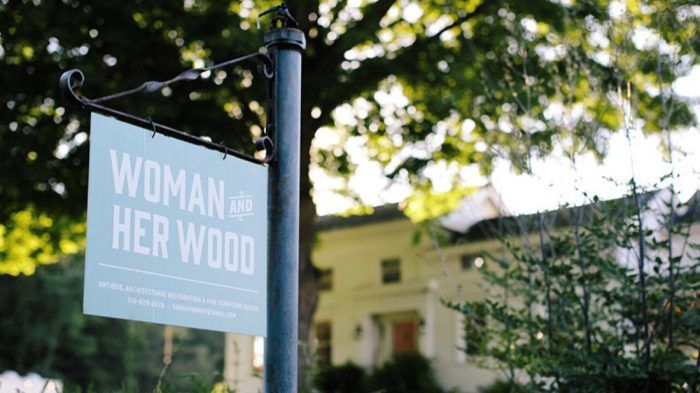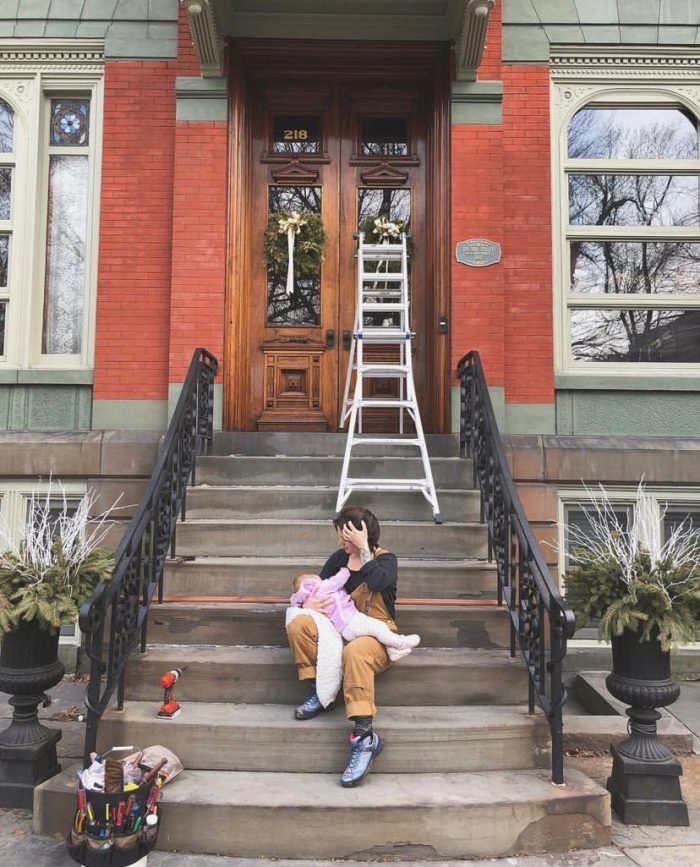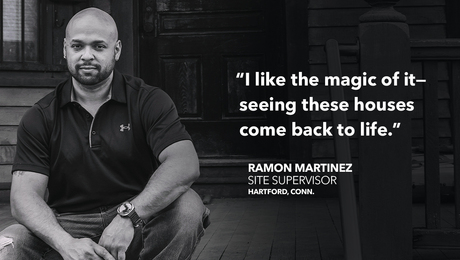Q&A With Sarah Vadney, Historic Preservationist
Sarah talks with Fine Homebuilding about the skills needed for historic preservation and changing the trades to make room for caregivers.

Sarah Vadney is a historic preservationist and owner of Woman and Her Wood. Having started out in fine furniture restoration, Sarah now does work on whole-house projects and other larger buildings. Sarah is motivated to produce a quality of work with healthy materials that honors the thoughtfulness of original craftsmanship. In this interview, Sarah talks about what it takes do historic preservation (and do it well), the challenges of being a caregiver in this field, and how people interested in this trade can learn. You can check out more of Sarah’s work on her Instagram, @WomanandHerWood, or on her website, womanandherwood.squarespace.com.
LMH: How do you describe what you do?
SV: I am a historic preservationist. I am a little bit more of an artist than a contractor because the process is so fluid, my materials are so intentional, and the motivation and passion is incredibly palpable. This work involves peeling back layers and letting the structure tell me what it was, were it has been, and what it needs. There’s not one project that I do that’s the same. It’s very nuanced and a lot of people don’t do it because it is so meticulous.
LMH: Why is it so meticulous? What are the different elements that you need to pay attention to?
SV: A lot of what I do is windows, doors, and millwork. And it is very detail oriented as far as the ornamentation. You have to be delicate about removing the layers of what’s been there before. Instead of grinding paint off and spraying lead everywhere, it takes care.
LMH: How do you balance the pressures of running a business and taking that care with your work?
SV: The most important part is communication. I try to be responsive—even if I don’t have time to provide an answer to a client’s email, I’ll just take a moment to write a note back and let them know that I saw their message. I think that makes a big difference. Everyone has become used to things happening immediately in our culture and I try to be very clear that that’s not how I work and that every project is unique. It takes the time that it takes. I primarily use historical linseed oil paint—I don’t use plastics and I try to be as environmentally responsible as I can—and that process can be very tedious. I use varnish and shellac and all these materials are all temperamental with weather and humidity.
LMH: You initially started with furniture restoration. How did you get into that line of work and then expand to what you work on now?
SV: I graduated from college with a bachelor’s degree in fine art and painting. I did what most artists do when they get out of college and went into food service, which helped me learn a lot about people. My older brother, who is a cabinetmaker, asked for help doing veneer repair for a large-scale project. I spent a day patching the veneer and regraining the patches. I then started apprenticing with him and, years later, I started my own company. And I dedicated my every breath to this until I started having children.

LMH: What are the ways you increase your knowledge and hone your skills?
SV: I am constantly practicing the trade and trying to be better. Every window sash I do is different and has its own set of challenges. I also work a lot with my friend Freddy Roman who is an amazing wealth of knowledge and a great teacher so it’s fun to work alongside him and his friends and bounce ideas within that community. I am constantly reading, and Instagram plays a part. I start conversations with craftspeople, and that platform gives you more of a community with people overseas and an opportunity to learn from their techniques.
LMH: For people who may be interested in this field, what skills are needed to excel and thrive in historic preservation?
SV: People skills and business skills. I say those first because you can be so talented but if you can’t market and get along with your clients, you’re nowhere. People think these trades are very glamorous but it’s actually pretty nitty gritty. I bundle up every morning and I’m standing constantly. If you don’t like standing, or you don’t like handling hazardous materials like lead, asbestos, or mold, historic preservation is not for you. It’s one thing to strip something or sand something and it’s another thing to strip or sand it properly. You have to be efficient and honed into detail.
I think starting at the basics is really important. Take a window preservation class at a local university. Many historical architectural salvage groups will do seminars—do those; start there. Take a lead-remediation class. Buy good-quality tools. Make sure you have a really good HEPA filter. All of these are your building blocks. Be an open book and never assume you know everything. I get asked a lot if I need help or an apprentice and I’m very honest in saying that I need help stripping and sanding and you need to be able to do that for eight hours straight. Interestingly, artists are really drawn to this field. There’s something about the way we’re wired that makes us good at taking the time to slow down, look at what we’re doing, and do it with intention.
LMH: How have you experienced gender dynamics in this field?
SV: When I met my husband and we started having children, I was working 80 hours a week and was working with varnish and VOCs. I realized I had to change everything I do because these materials are so dangerous. It was an awakening as to how I could be doing my work more safely because I had a responsibility to both my children and myself.
On most job sites, you’re there at 9 am and you leave at 5 pm. This is a system primarily made for men—it’s not made for caregivers, regardless of gender, and this is not talked about enough in this realm. Also, a lot of people try to compare me to a “master craftsman” but I say that I’m a little bit different—I work wacky hours, but the result will be so much better and our journey will be better because I include the client in the process. I’ve wondered if I need to include in my contract that I’m going to stay home if my kids are sick. And will doing so—just having a life—make me less marketable compared to those who aren’t drawing those boundaries?

LMH: We don’t talk a lot about the demands of caregiving when it comes to the trades. What do you think needs to change on the client side of things or within the residential building sphere to make more space for parents like you?
SV: You’re changing a culture and that doesn’t happen overnight. What doesn’t help are YouTube videos or TV shows where you watch something happen so quickly. As a culture, we don’t rest. We’re expected to be accessible constantly. But happy people need the time to be a person first and then when a person is happy and balanced, they will deliver a better quality product. If I’m awake all night with my sick child and I have to be on a job site, my head is not in the game. So, I’ll be a better person if I can stay home with my kid during that time.
I’ve heard some push back from male counterparts who say that they are sick of hearing “I’m a woman in the trades,” but then they say that we should post more selfies! The message here is: Post pictures of being a mom with a hammer, but don’t talk about being a mom.
During every consultation, I tell people that I am a mom and need to be there for my kids when they need me, but I am working when that’s not the case. Just because you don’t see me, doesn’t mean I’m not in it and working behind the scenes.
LMH: What are your dreams for your business and for your craft?
SV: Things are changing all the time. As the needs of my life change, what I want also changes. Right now, I’m moving more into the project management side of things and I’m not taking small projects anymore. I’m doing full houses and I am currently booked for two-and-a-half years. My goal is to be even more selective and work with the clients who care as much as I do about what we’re doing. I want my work to outlast me.
Photos courtesy of Sarah Vadney
RELATED STORIES

























